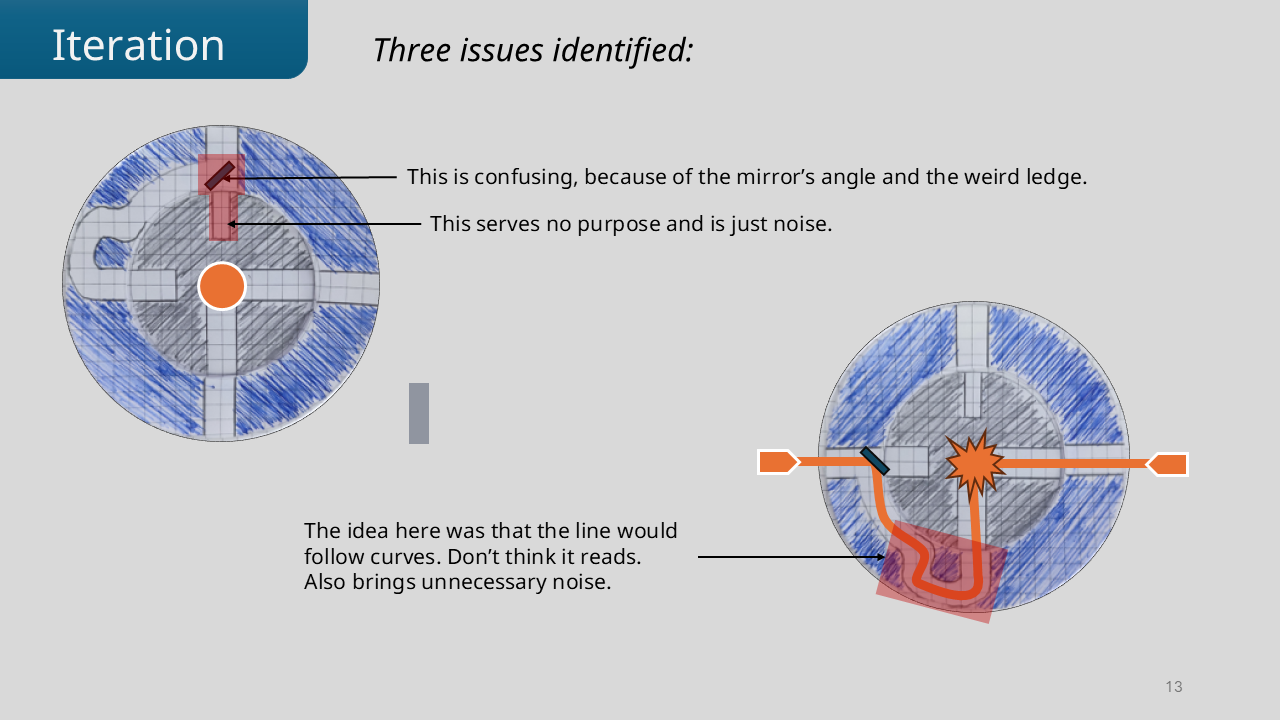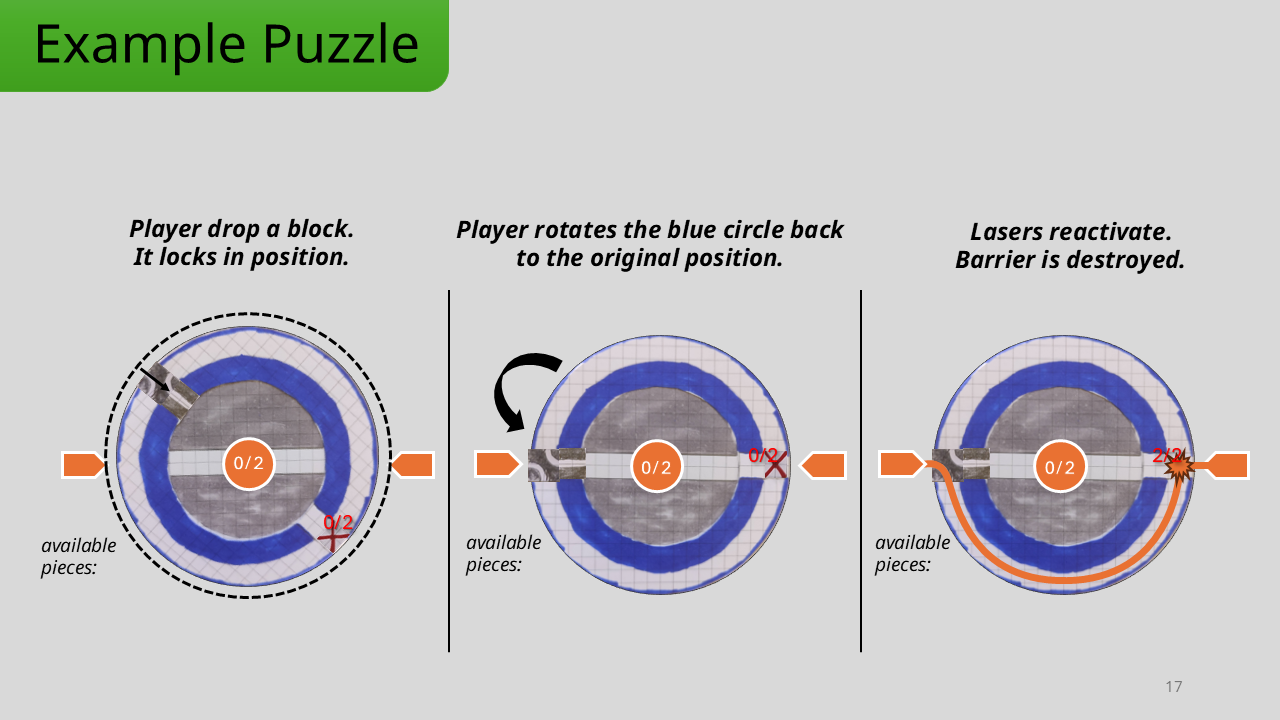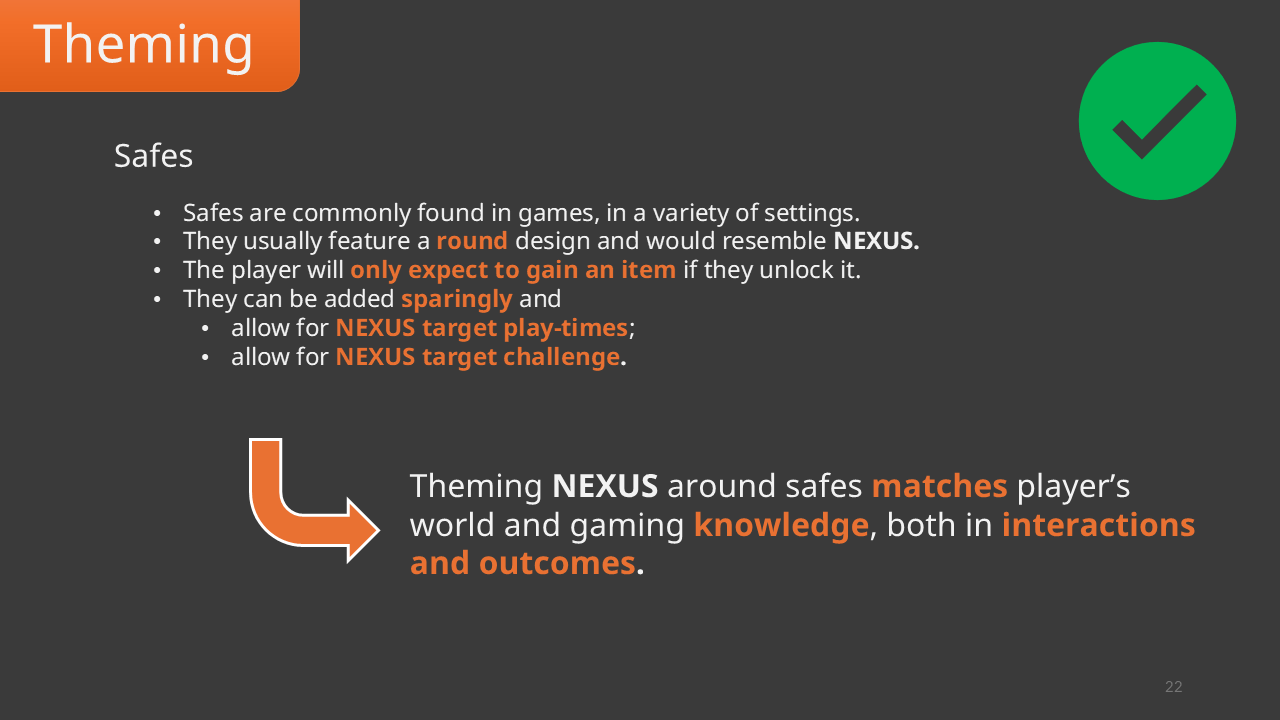Gameplay Demo - Current State of the Project (Feb 2025)
The Sporadic Puzzles
Solo, University Final Year Project
5 months (In progress)
-
Concept
Design
Implementation
Documentation (learn more about these in the design process below!):
Project Pitch
AAA Action-Adventure games often offer puzzle minigames.
They can help to break the pace and bring some variety to the player experience.
However, these are sometimes considered tedious by both action fans and puzzle fans alike.
Too often, the necessity of being quick comes at the price of being trivial.
Can a puzzle minigame for AAA Action-adventure games be fun for both action and puzzle fans?
Work on this project is in progress: follow the design process below!
DESIGN PROCESS BLOG
STEP 1: INITIAL RESEARCH
In the first two weeks, I set out to:
define puzzles, minigames and obtain vocabulary for comparison and analysis
analyze the purpose of a minigame inside of a bigger project
study puzzle types appropriate to the specific context
compare dedicated puzzle games and puzzle minigames on a number of parameters such as length, challenge, noise etc.
From these findings, I was able to set out a number of project parameters that, if met, would theoretically provide a successful project.
Project Parameters
-
Puzzles will have 1+ optional challenge on the side of the screen.
Completing these challenges will get the player more rewards.
-
The main puzzle aims to be solved in approx. 1 min.
The same puzzle with optional challenge aims to be solved in approx. 3 min.
-
Main puzzle should require some limited effort from the player. It is quickly rewarded.
Optional challenge forces the player to be more intentional in their puzzle solving and forces the player to use the mechanic in a novel way
The player can choose themselves the level of challenge for each level by partaking on optional challenges or not.
-
The puzzle should be grounded in the game world and not feel fully separated from the main gameplay. It will be instanced but it should be elegantly transitioned from main gameplay. Option to use the world as background for puzzle.
If visual noise is added, it should not detract from the puzzle or make it harder to read in any way
Distance between different elements should be kept to a minimum in order to limit the realm of possibilities.
The number of puzzle pieces should be of (or very close to) the necessary number to solve the main puzzle.
-
Instructions will be given in a sentence: a few words must be enough to explain the puzzle goal. Icons and Pictograms can be used to reinforce communication.
Both failure and success must be clearly communicated to the player with puzzle animation and eye-catching text.
Controls must be simple and always clearly present on screen.
Excerpts from the initial research paper (9000+ words)
STEP 2: CONCEPT
During these two weeks, I sought to develop a puzzle concept, fitting for the parameters previously established (see Initial Research). I ended up doing two different concepts (NEXUS & LightPath), and pitted them against each other.
In order to better judge of future potential, I:
detailed the original concept;
designed an example puzzle;
explored expansion possibilities;
went through a full round of iteration, looking to solve all the issues highlighted by the first puzzle;
iterated on the first puzzle to test the changes.
designed a new example puzzle.
All of these steps were fully documented for both concepts.
After completing this process, I evaluated both project on a number of aspects (i.e. difficulty, scalability) and picked the most fitting to the specific context of this project. I then went through project parameters established in the initial research again one by one, checking if any conflicts could be found.
This process was documented here:
Result: NEXUS is brought forward.
NEXUS concept documentation
Concept Extras
Since I have been working with pen and paper to test puzzles, I also filmed a little demo for my supervisor. It was off the cuff and so a little bit rambly, but it might give an insight into the design process:
Curious about LightPath, the concept left behind?
Download the full concept documentation here:
STEP 3: IMPLEMENTATION
In progress






































